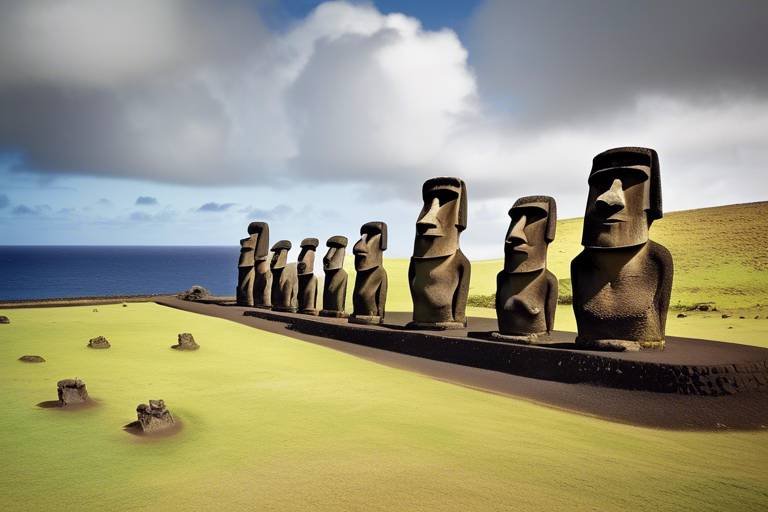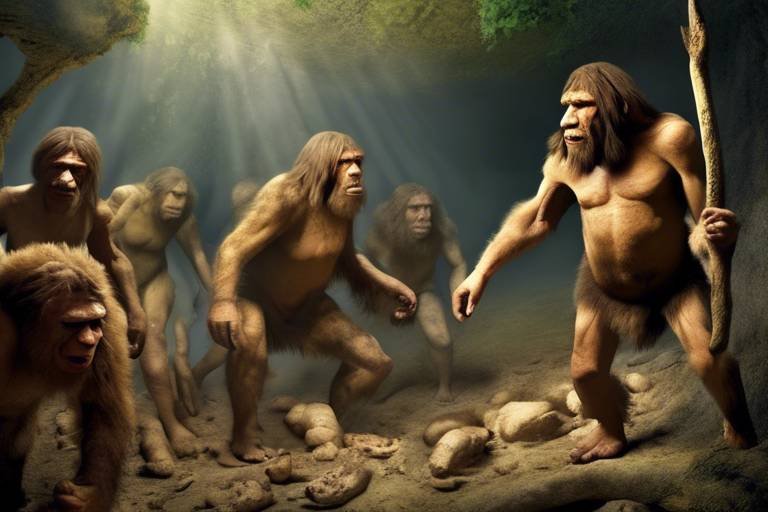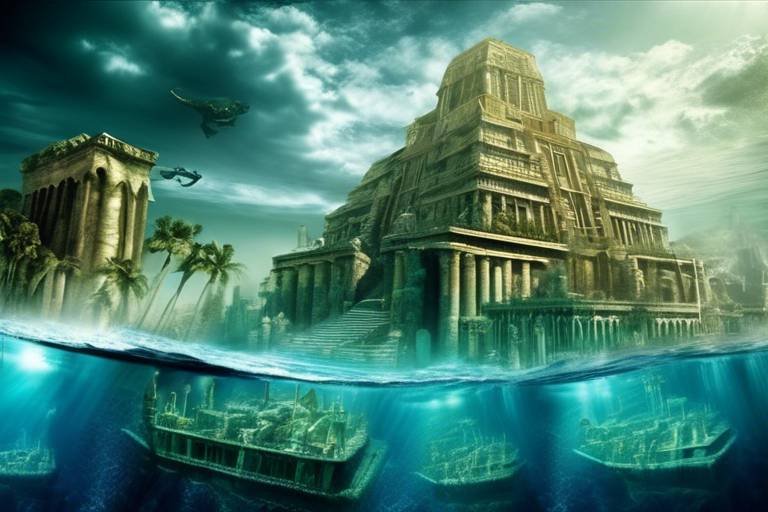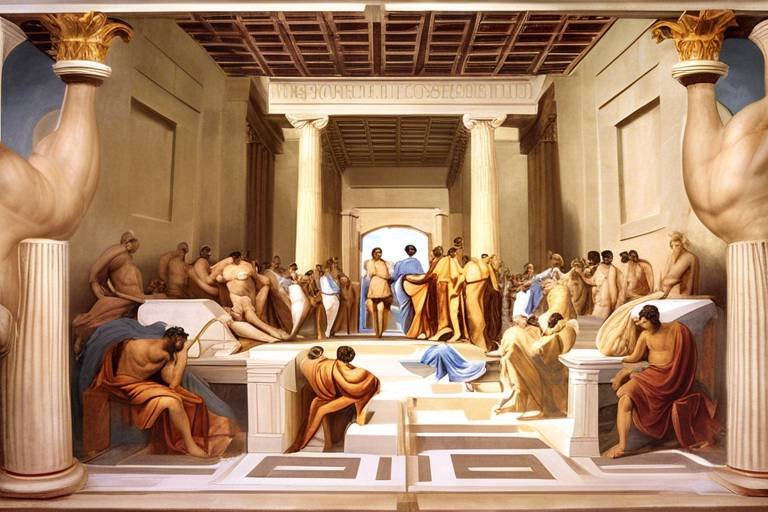The Mystery of the Moai Statues of Easter Island
The Moai statues of Easter Island stand as silent guardians of a bygone era, shrouded in mystery and intrigue. These colossal stone figures, with their enigmatic expressions and imposing presence, have captured the fascination of people around the world for centuries. But what secrets do these ancient sentinels hold? Let's delve into the captivating world of the Moai statues and uncover the mysteries that surround them.

History and Origin of the Moai
The history and origin of the Moai statues on Easter Island are shrouded in mystery and intrigue. These iconic stone figures, carved by the ancient Rapa Nui civilization, hold a significant cultural and historical importance that continues to captivate the world. The Moai statues, with their distinct features and imposing presence, stand as silent sentinels of a bygone era, symbolizing the ingenuity and craftsmanship of their creators.
Carved from volcanic tuff, the Moai statues are believed to represent deceased ancestors or powerful chiefs, serving as both guardians and sources of spiritual guidance for the Rapa Nui people. The sheer scale and number of these statues scattered across the island hint at a complex societal structure and a deep-rooted reverence for their ancestors.
The exact methods used to carve and transport these massive statues remain a subject of debate among archaeologists and historians. Some theories suggest that the Rapa Nui civilization employed a combination of stone tools, ropes, and wooden sledges to move the Moai from the quarries to their final resting places, a remarkable feat considering the size and weight of the statues.
As visitors gaze upon the Moai statues standing stoically against the backdrop of the Pacific Ocean, they are transported back in time to an era of great cultural flourishing and artistic achievement. The enigmatic allure of these ancient monoliths continues to spark curiosity and wonder, inviting us to delve deeper into the rich tapestry of Easter Island's past.

Construction Techniques
When it comes to the construction techniques of the enigmatic Moai statues on Easter Island, one can't help but marvel at the ingenuity and skill of the ancient Rapa Nui civilization. These colossal statues, some reaching heights of over 30 feet and weighing up to 80 tons, were crafted from volcanic tuff using a combination of hand tools and a remarkable understanding of stone carving.
The process of creating a Moai statue was a laborious endeavor that required meticulous planning and precision. The Rapa Nui artisans would first select a suitable quarry for the volcanic tuff, carefully extracting the massive blocks of stone using stone or shell tools. These tools, although primitive by modern standards, were expertly wielded to shape the raw material into the iconic humanoid figures that we see today.
Transporting the completed statues from the quarries to their designated ceremonial platforms, known as ahu, was perhaps the most awe-inspiring aspect of the construction process. Scholars believe that the Rapa Nui people utilized a combination of log rollers, ropes, and sheer manpower to move the Moai across the rugged terrain of Easter Island. This monumental effort speaks volumes about the dedication and communal spirit of the ancient islanders.
Moreover, the placement of the Moai on the ahu was a carefully orchestrated ritual, symbolizing the ancestral connections of the Rapa Nui people. The statues were positioned to face inland, overlooking the villages and offering protection to the community. This deliberate positioning not only showcased the craftsmanship of the artisans but also reflected the spiritual beliefs and societal structure of the civilization.
While the exact techniques and tools used in the construction of the Moai statues remain a subject of fascination and debate among archaeologists and historians, one thing is certain - the legacy of these remarkable stone giants continues to captivate and inspire visitors from around the world. The construction techniques employed by the ancient Rapa Nui civilization stand as a testament to human creativity and perseverance, echoing across centuries to remind us of the enduring mysteries of Easter Island.

Purpose and Symbolism
The Moai statues of Easter Island stand as enigmatic sentinels, shrouded in mystery and steeped in symbolism. These immense stone figures, carved by the ancient Rapa Nui civilization, were not merely decorative sculptures but held profound significance in the cultural and spiritual beliefs of the islanders. Scholars and archaeologists have put forward various theories regarding the purpose and symbolism behind the placement of the Moai statues across the island.
One prevalent belief is that the Moai served as **ancestral representations**, embodying the spirits of revered ancestors and chiefs. These statues were positioned facing inland, overlooking the villages and providing protection and guidance to the community. The act of erecting a Moai was a **ritualistic process**, symbolizing the transfer of spiritual power and authority from the ancestors to the living leaders.
Moreover, the sheer size and scale of the Moai statues conveyed **social status and prestige** within Rapa Nui society. The taller and more elaborately carved the statue, the greater the importance and influence of the individual it represented. The Moai were not mere stone figures but **living embodiments of power and lineage**, connecting the past with the present in a tangible form.
Another intriguing aspect of the Moai's symbolism lies in their **alignment with celestial events**. Some researchers suggest that certain statues were strategically placed to align with the solstices or other astronomical phenomena, indicating a sophisticated understanding of celestial navigation and timekeeping by the ancient islanders.
Furthermore, the act of carving and transporting these colossal statues was not just a feat of engineering but a **sacred endeavor** imbued with spiritual significance. The quarrying, carving, and placement of the Moai involved elaborate ceremonies, communal labor, and intricate rituals, reinforcing the interconnectedness of the Rapa Nui people with their ancestors and the natural world.
In essence, the purpose and symbolism of the Moai statues on Easter Island are multifaceted, reflecting a complex tapestry of cultural, spiritual, and social meanings that continue to intrigue and inspire awe in modern-day visitors and researchers alike.

Decline and Abandonment
The decline and abandonment of the Moai statues on Easter Island are shrouded in mystery and speculation, adding to the enigmatic allure of these ancient monolithic figures. The once-thriving Rapa Nui civilization, responsible for the creation of the Moai, faced a series of challenges that ultimately led to their downfall.
One of the primary factors contributing to the decline of the Rapa Nui civilization was environmental degradation. The extensive deforestation of the island, primarily for the purpose of transporting and erecting the massive Moai statues, resulted in soil erosion and a loss of vital resources. This ecological imbalance significantly impacted the sustainability of the island's ecosystem, leading to food shortages and societal unrest.
Furthermore, internal conflicts and power struggles within the Rapa Nui society exacerbated the situation, causing social disintegration and a breakdown of traditional governance structures. The once-unified community fragmented, weakening their ability to address the mounting challenges they faced.
As resources dwindled and societal cohesion faltered, the construction of the Moai statues came to a halt, and the once-vibrant ceremonial centers fell into disuse. The abandoned Moai sites scattered across the island stand as silent witnesses to the decline of a civilization that once thrived in isolation.
Despite the efforts of modern archaeologists and historians to piece together the events that led to the decline of the Rapa Nui civilization, many aspects of this chapter in Easter Island's history remain shrouded in uncertainty. The enigmatic smiles of the Moai statues seem to hold the secrets of a bygone era, inviting speculation and contemplation.

Restoration Efforts
Restoration efforts aimed at preserving the enigmatic Moai statues on Easter Island have been crucial in safeguarding these ancient cultural treasures for future generations. Conservation projects focus on stabilizing the statues, protecting them from environmental damage, and addressing the impact of past neglect. Skilled experts utilize specialized techniques to repair cracks, reinforce structural integrity, and prevent further deterioration of the statues.
One significant restoration project involves the re-erection of fallen Moai statues to their original positions, showcasing the dedication to maintaining the historical integrity of these iconic figures. The delicate process of moving these massive stone monuments requires careful planning, advanced equipment, and expert craftsmanship to ensure their safe relocation without causing harm.
Conservationists also work tirelessly to mitigate the effects of weathering and erosion on the Moai statues, implementing protective measures such as coatings, drainage systems, and vegetation control. By employing a combination of traditional methods and modern technology, these restoration efforts strive to preserve the cultural heritage embodied by the Moai and prevent their irreversible decay.

Controversies and Debates
Controversies and debates surrounding the Moai statues of Easter Island have sparked intense discussions among archaeologists, historians, and indigenous communities. One of the most contentious issues is the ownership of the statues and the cultural heritage they represent. Some argue that the Moai should be returned to the Rapa Nui people, who are the descendants of the civilization that created these iconic figures. Others believe that the statues are part of humanity's shared heritage and should remain in museums and archaeological sites for preservation and study.
Another hotly debated topic is the purpose behind the construction and placement of the Moai statues. While some theories suggest that the statues served as ancestral guardians or markers of sacred sites, others propose more practical explanations, such as demonstrating the power and authority of tribal leaders. The mystery shrouding the precise intent of the Moai continues to fuel speculation and intrigue.
Moreover, the methods used by the ancient Rapa Nui people to transport the massive statues across the island have been a subject of controversy. Theories range from the statues being "walked" to their final locations to the possibility of using wooden sledges and ropes for transportation. The sheer scale and precision of the Moai constructions have led to heated debates over the logistical challenges faced by the civilization that created these enigmatic figures.
Additionally, the environmental impact of the Moai construction has raised concerns among researchers. Some argue that the deforestation and resource depletion caused by the Rapa Nui civilization's obsession with erecting statues led to their own downfall. The delicate balance between cultural expression and environmental sustainability continues to be a point of contention in discussions about the legacy of the Moai statues.

Modern-Day Significance
The Moai statues of Easter Island hold a modern-day significance that transcends their ancient origins. These enigmatic stone figures, with their solemn gazes and towering presence, continue to captivate artists, scholars, and tourists alike. In contemporary art, the Moai have inspired countless interpretations, serving as symbols of mystery, resilience, and cultural heritage. Their iconic silhouettes have found their way into paintings, sculptures, and even digital art, resonating with audiences around the globe.
Furthermore, the Moai statues play a crucial role in the cultural identity of Easter Island and its inhabitants. As tangible links to the island's rich history and traditions, the statues serve as powerful symbols of pride and connection for the local community. In recent years, efforts to protect and preserve the Moai have gained momentum, with conservation projects aiming to safeguard these ancient treasures for future generations.
From a tourism perspective, the Moai statues are a major draw for visitors to Easter Island, attracting travelers from far and wide to witness their grandeur up close. The statues' mysterious allure and the stunning landscapes of the island create a unique and unforgettable experience for those who make the journey. Tourists can explore the various archaeological sites scattered across the island, each offering a glimpse into the ancient civilization that created these monumental statues.
In conclusion, the modern-day significance of the Moai statues lies in their ability to transcend time and culture, serving as enduring symbols of human creativity and ingenuity. As we continue to unravel the mysteries surrounding these ancient monuments, their relevance in contemporary art, culture, and tourism only grows stronger, ensuring that the legacy of the Moai endures for generations to come.

Visiting Easter Island
Visiting Easter Island is a journey like no other, a pilgrimage to the heart of mystery and wonder. As you set foot on this remote island in the vast Pacific Ocean, you are immediately enveloped in the enigmatic aura of the Moai statues that dot the landscape. These towering figures, with their solemn gaze and stoic presence, beckon you to unravel the secrets of the ancient Rapa Nui civilization.
Exploring Easter Island is a truly immersive experience, where every step reveals a new facet of history and culture. From the iconic Ahu Tongariki with its row of majestic Moai standing guard against the horizon to the rugged coastline where petroglyphs whisper tales of the past, every corner of the island holds a story waiting to be discovered.
For travelers seeking a deeper connection with the Moai statues, a visit to the quarry of Rano Raraku is a must. Here, you can witness firsthand the incredible craftsmanship of the Rapa Nui people as they carved these colossal statues out of volcanic rock. The sight of unfinished Moai scattered across the hillside is a poignant reminder of the civilization that once thrived on this remote island.
As you traverse the island, you will encounter the Ahu platforms where the Moai statues were originally placed, each site offering a glimpse into the spiritual beliefs and rituals of the Rapa Nui society. The intricate carvings and unique features of each Moai speak volumes about the individuality and artistry of the ancient sculptors.
While the Moai statues are undoubtedly the main attraction of Easter Island, the island itself is a treasure trove of natural beauty. From pristine beaches and lush valleys to volcanic craters and mysterious caves, the landscape is as diverse as it is captivating. Whether you choose to hike to the summit of Rano Kau or relax on the white sands of Anakena Beach, every moment on Easter Island is infused with a sense of awe and wonder.
For those seeking a deeper understanding of the island's history and culture, a visit to the Easter Island Museum is highly recommended. Here, you can delve into the archaeological finds and artifacts that shed light on the enigmatic past of the Rapa Nui civilization, providing valuable context to your journey of exploration.
Visiting Easter Island is not just a trip, it is a transformative experience that will leave an indelible mark on your soul. As you bid farewell to this mystical island, the memories of the Moai statues standing silent sentinel will linger in your heart, a reminder of the enduring legacy of a civilization lost in time.

Future of the Moai
The future of the Moai statues on Easter Island is a topic of great interest and concern as these iconic symbols face various challenges in the modern world. With increasing tourism and environmental changes, the preservation and study of the Moai statues require careful planning and sustainable practices to ensure their longevity for future generations.
One of the key challenges in the future of the Moai lies in striking a balance between conservation efforts and tourism demands. As more visitors flock to Easter Island to witness these enigmatic statues in person, there is a growing need to manage the impact of tourism on the fragile ecosystem of the island. Sustainable tourism practices, visitor education programs, and site management strategies are essential to protect the Moai statues and their surrounding environment.
Furthermore, ongoing research and archaeological studies play a crucial role in unraveling the mysteries of the Moai statues and their cultural significance. By employing advanced technologies and interdisciplinary approaches, researchers can gain deeper insights into the history, construction techniques, and symbolism of the Moai, contributing to a better understanding of the ancient Rapa Nui civilization.
In addition to conservation and research efforts, community engagement and indigenous perspectives are vital in shaping the future of the Moai statues. Collaborative projects involving local communities, cultural institutions, and governmental agencies can ensure that the preservation of the Moai aligns with the values and aspirations of the Rapa Nui people, fostering a sense of ownership and stewardship over these cultural treasures.
Looking ahead, the future of the Moai statues holds both challenges and opportunities for continued exploration, conservation, and appreciation. By fostering a sustainable approach to heritage management and fostering dialogue between diverse stakeholders, the legacy of the Moai can endure as a timeless symbol of human creativity and resilience in the face of changing times.
Frequently Asked Questions
- What is the significance of the Moai statues on Easter Island?
The Moai statues hold great cultural and historical significance for the Rapa Nui people of Easter Island. These iconic statues are believed to represent ancestors, chiefs, or important figures, serving as a connection to the spiritual world and a symbol of community identity.
- How were the Moai statues constructed and transported?
The ancient Rapa Nui civilization used sophisticated carving techniques to sculpt the Moai statues from volcanic tuff. They were then transported across the island using a system of sleds and ropes, showcasing the engineering prowess of the islanders despite limited resources.
- Why were the Moai statues abandoned?
The decline of the Rapa Nui civilization, possibly due to environmental degradation and societal conflicts, led to the abandonment of the Moai construction sites. The statues were toppled or left unfinished, contributing to the enigmatic aura surrounding Easter Island.
- Are there controversies surrounding the Moai statues?
Yes, the Moai statues have sparked debates regarding their cultural ownership, interpretation, and preservation. Issues such as repatriation, conservation practices, and indigenous rights continue to fuel controversies surrounding these enigmatic sculptures.
- How can travelers visit Easter Island to see the Moai statues?
Travelers can visit Easter Island by flying from Santiago, Chile. Once on the island, guided tours and local accommodations offer opportunities to explore the Moai sites, learn about the island's history, and witness the awe-inspiring presence of these ancient statues.



















